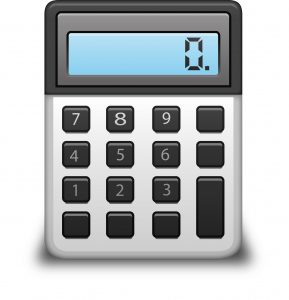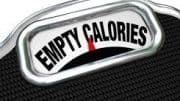The key to weight loss is a negative calorie balance.
I know this seems like a simple concept, but many cannot accomplish this simple task. If you want to lose weight, you must create a deficit of calories. It is this simple if you eat too many calories, you will lose weight, and if you eat too few, you will lose weight. Despite what many have said: “I eat nothing and continue to gain weight,” the law of physics still exists. You can’t make something from anything, so without a calorie excess, there is no way to absorb weight by osmosis.
I know you are now thinking: what about thyroid disease? Endocrine diseases, such as that of the thyroid, do not change the formula, but it does slow the metabolism of the person that has it. It makes it harder to lose weight, but the fact is you still have to create a deficit, but it harder to do without a corrected thyroid. Once you are placed on Synthroid, the debt is easier to accomplish and maintain.
So what is the point? If you go to your local wellness center, they can estimate your metabolic rate and make it easier for you to lose weight. One trip to the BOD POD and a completed metabolic test will give you a lot of information on how to best accomplish weight loss.
In today’s society, there is an endless stream of quick fixes and fad diets that will tell you that their plan will help you lose weight. Put your wallet away and save you many. Do not invest your money in their bogus claims. If you need to know why you are gaining weight, the answer is a simple math equation and a look at your dietary habits. As soon as you understand this formula, you will not need to buy another product from the multi-billion dollar diet industry.
So what do we need?
- Estimated Calories In – This is what you eat.
- Estimated Calories Burned – This is the calories that you have burned.
Magic Formula:
- Calorie Balance = Calories Eaten – Calories Burned.
Is it that simple? Yes, it is. If the calorie balance is negative, you will lose weight; if it is positive, you will gain weight. If you want to maintain your weight, you need a zero-sum game, which means you want your weekly deficit to be zero. Since we lose fat, we must create a negative energy balance or a calorie deficit. When you create a negative calorie balance, your body will burn your stored fat for energy. Your brain, heart, and kidneys need some carbohydrates to function efficiently, so you cannot operate on fat alone efficiently.
How big of a deficit?
Three Ways You Can Set a Caloric Deficit
1. Pick a specific number of pounds per week.
This method is how most dieters set a deficit and is how I do it.
If you want to lose a pound per week, you take the pound of fat value for calories which is 3500 calories per pound of fat and divide that by seven days. That makes our deficit created by diet and exercise to be 500 calories per day (3500/7=500). For most of us, this works well, and we can do so the math in our head. For some, 500 calories per day might be too large of a deficit, and for other, it is too small.
The problem, however, is that this size deficit might be too aggressive for some and too slow for others. If you’re already maintaining your weight at 2,000 calories per day, cutting your food intake by 25% might be too drastic, but for the masses, it works.
2. Pick a percentage.
Instead of estimating your maintenance intake based on a weight loss per week, you can do it based on your caloric maintenance requirements. This method does require either a simple calculation but it an is made more accurate if you know your lean body mass. Most Wi-Fi scales today will measure your fat percentage by an impedance which is relatively accurate. I personally just use a calorie requirement calculator like the on Mayo.com. Once you know your requirements, just reduce by 10-25%. You can be as aggressive as you would like to be (remember, talk to your medical provider If you plan to go more aggressive than 25% of a calorie deficit).
If you exercise more, you are going to have higher energy needs and will need to be less aggressive with your percentage. For sedentary people, being over aggressive with their goals might limit their food intake too much t meet their vitamin and mineral needs. With lower than average calorie needs, this deficit might be too small relative to their goals. It is always good to lose weight with both diet and exercise.
3. Pick a set number of calorie to eat.
For example, pick a number like 1500 calories a day and make that your set point. Anything you burn over that is weight loss. This method works for folks who have difficulty calculating their caloric requirements.
Recommendation: Use choice 1 or 2 and calculate a deficit. Use a journal to plan your meals and exercise. When you plateau, recalculate your caloric needs.









Leave a Reply